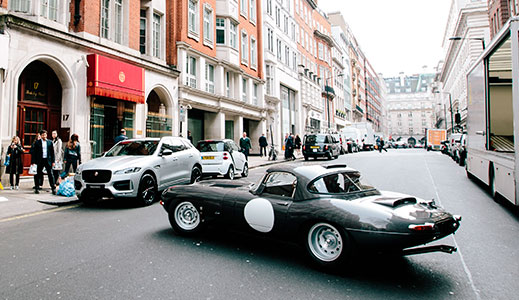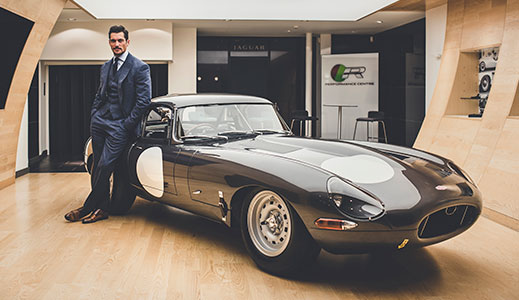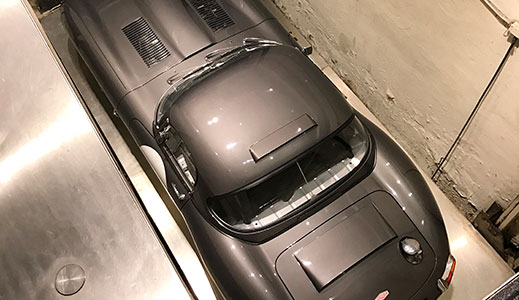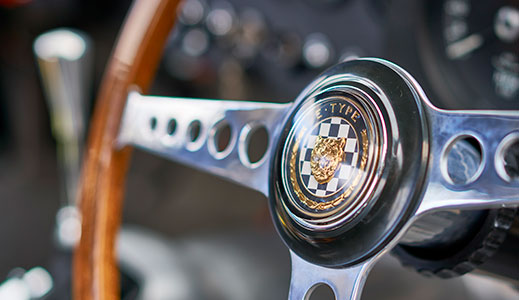John Edwards Q&A: A Different Kind of Handover
The Managing Director of Jaguar's Special Vehicle Operations
division talks about seeing the Lightweight E-type project come to fruition,
and handing the cars to their new owners.

The Lightweight E-type was a bold project. How pleasing has it been to see the finished cars with their owners?
It has been fantastic. We honestly didn't know if this project would work, but we wanted to make a statement about Jaguar's heritage and our approach to the Jaguar Classic business. It has been hard work, we've learnt a lot of things along the way, but we're delighted with how the cars turned out. The team who built them worked so hard, and with such passion, it's like these cars are part of their family. It was a real labour of love. But they're proud to see them go to owners around the world.
Were you surprised by interest in the Lightweight E-type, particularly from aspiring owners?
For most of my life in the car business, we've had to search for customers. The Lightweight E-type was very different - customers were hunting us out, and we had to choose which customers to give the cars to. We wanted people who really understood the provenance of the car, and who wanted to use it - people who don't just see it as an investment, but were passionate about the Jaguar brand and its heritage. We were actually vetting customers, which was a strange thing to experience. I have to say I quite like it, so I'm trying to repeat that as much as possible within the SVO business!
Some brands would have used the Lightweight E-type as inspiration for a more modern design. Why did Jaguar choose to do the cars in their original specification?
Producing something that was true to the original spec, even though it was hard to do, was incredibly important. For the guys who did it, it became a real passion. They were absolutely dissecting the original cars, and understanding how they were built - even to the point of things that you may think we'd never do it today. But we religiously followed that process.
How important is heritage to modern Jaguar?
Our CEO, Dr Ralf Speth, is probably the most passionate guy in our business when it comes to Jaguar's heritage. It's part of what makes Jaguar different. It's something we've always been proud of, but we were sometimes a bit nervous about how we could use it. When you go to a market such as China you begin to appreciate how important your heritage is. They may know nothing about you as a brand, but they've got a real hunger in terms of understanding where the brand came from - that gives a brand authenticity and integrity.
Given the success of the project, was it tempting to build more cars? Or was it more important to maintain exclusivity of both the originals, and the re-born Lightweight E-types?
We could have built more cars - and I guess for a nanosecond, when we saw the response, that we were tempted. But the story of these cars - the romance of them - was the fact they're the "Missing Six". The inspiration for the project was all about completing that gap in the ledger, with those handwritten VIN numbers. The fact that those six gaps in our history existed was the real reason people were interested. Once we made that deal with ourselves, with the public and the buyers, it was all about maintaining that authenticity to the project.
How important is it that owners like Stratstone have said they will be using the cars and putting them on public display?
One thing we did want was that the cars would be on-show, and would be used. While we couldn't absolutely prescribe that, one of the things we tried to do was to select customers who would not only show the vehicles, but also race them. We haven't built these cars as museum pieces or works of art. They're totally true to the original race car specification. They're designed to compete.
Discover More

A New Home In Mayfair London
The Jaguar Lightweight E-type arrives at Stratstone's London showroom

David Gandy Visits the E-type
Britain's leading male model talks about his passion for style and cars

Exclusive Appearance in Mayfair
YouTube influencer and car enthusiast Shmee150 visits the Lightweight E-type

